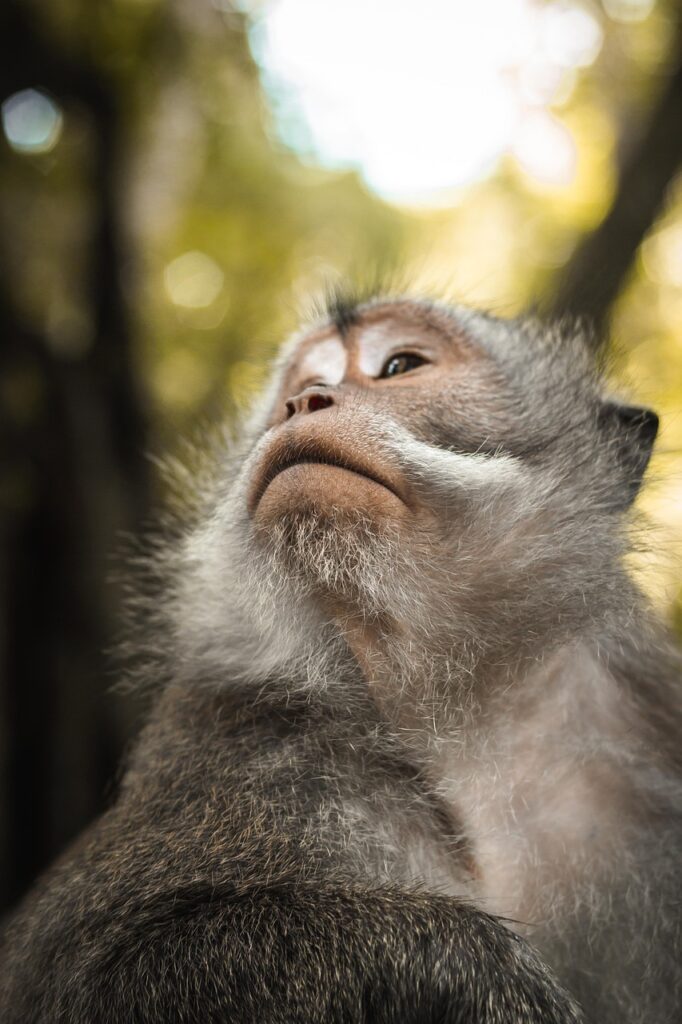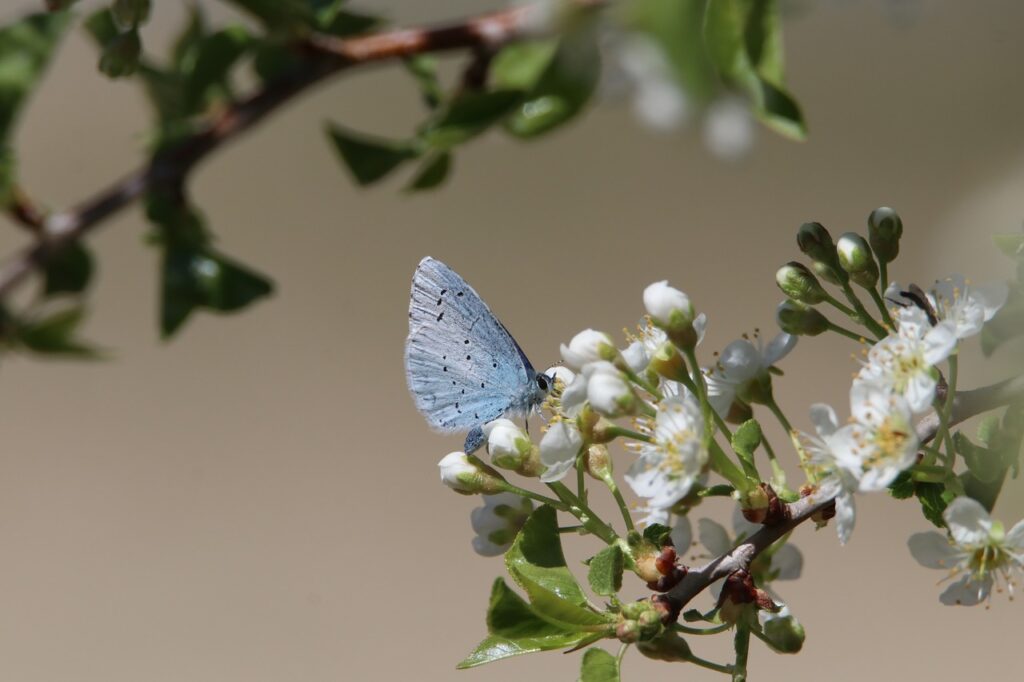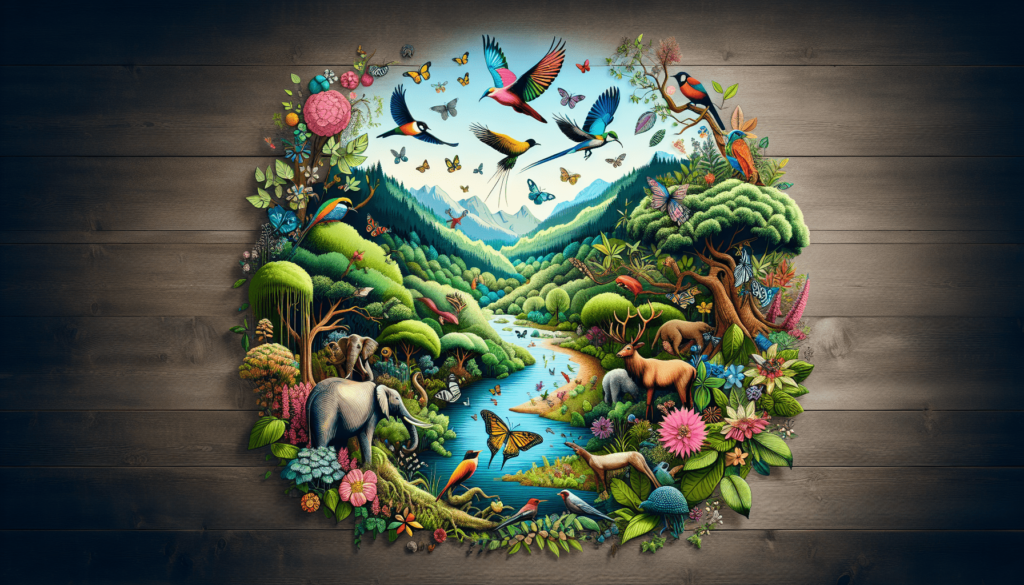In today’s article, we are excited to share with you a handful of remarkable biodiversity conservation projects that have achieved remarkable success. These initiatives have made a significant impact in preserving and protecting our planet’s precious ecosystems and the myriad of species that call them home. From restoring wetlands to promoting sustainable farming practices, these projects serve as inspiring examples of what can be achieved when we prioritize the preservation of our planet’s rich biodiversity. Let’s delve into these extraordinary endeavors together and uncover the incredible results they have achieved.

Project 1: Great Barrier Reef Marine Park
Marine Protected Areas
The Great Barrier Reef Marine Park is one of the most iconic and vital marine ecosystems in the world, located off the coast of Queensland, Australia. To preserve and protect this magnificent natural wonder, a strategic approach of establishing marine protected areas (MPAs) has been implemented. These MPAs serve as zones where human activities are limited or controlled, allowing marine life to thrive undisturbed. By designating different zones within the park, such as marine national parks, conservation parks, and general-use zones, a balance is achieved in managing human use and conservation efforts. This collaborative strategy ensures the long-term health and resilience of the Great Barrier Reef ecosystem.
Collaborative Approach
The successful conservation of the Great Barrier Reef Marine Park is founded upon a collaborative approach that involves multiple stakeholders. The Australian Government, alongside traditional owners, scientists, researchers, conservation organizations, tourism operators, and local communities, all work together to actively manage and protect the park. This collaborative approach ensures that decisions are made collectively, based on scientific knowledge and traditional ecological knowledge, to address the various challenges and threats facing the reef. By engaging multiple perspectives and expertise, a shared vision for conserving the Great Barrier Reef is achieved.
Coral Restoration Efforts
Coral reefs are critical components of marine ecosystems, providing habitat for a vast array of marine species. However, the world’s coral reefs are facing significant threats, including climate change and coral bleaching. To combat these challenges, the Great Barrier Reef Marine Park implements comprehensive coral restoration efforts. These initiatives involve a combination of strategies, including coral nurseries, coral seeding, and innovative techniques such as larval propagation and restoration genetics. Through these efforts, damaged or degraded reef areas are rehabilitated, promoting the growth and recovery of coral populations. By actively restoring coral reefs, the Great Barrier Reef Marine Park is ensuring the future survival and resilience of this invaluable ecosystem.
Project 2: Gorongosa National Park
Conservation and Restoration
Gorongosa National Park, located in Mozambique, is a shining example of successful conservation and restoration efforts in Africa. Once devastated by civil war and poaching, the park has undergone a remarkable transformation. Through a collaborative partnership between the Government of Mozambique and the Gorongosa Restoration Project, significant progress has been made in rehabilitating the park’s ecosystems and protecting its biodiversity. The restoration project focuses on repairing damaged habitats, reintroducing key species, and implementing effective anti-poaching measures. By combining scientific research, community engagement, and sustainable management practices, Gorongosa National Park has become a thriving hub of biodiversity.
Community Involvement
The success of Gorongosa National Park’s conservation efforts can largely be attributed to meaningful community involvement. Local communities are recognized as crucial partners in the protection and restoration of the park. The Gorongosa Restoration Project works closely with communities surrounding the park, providing training, employment, and educational opportunities. By empowering local communities to actively participate in conservation initiatives, a sense of ownership and stewardship is fostered. This community-driven approach not only benefits the park’s ecosystems but also ensures sustainable livelihoods for the neighboring communities, creating a harmonious relationship between people and nature.
Species Reintroduction
One of the key components of Gorongosa National Park’s restoration efforts is the reintroduction of key species. During the civil war, many iconic animal species were driven to the brink of extinction. Through intensive conservation efforts, species like African elephants, lions, zebras, and buffalo have been successfully reintroduced to the park. This not only contributes to the recovery of the park’s ecosystems but also has a positive impact on the local community through tourism and income generation. Species reintroduction serves as a powerful tool in restoring ecological balance and reestablishing a thriving wildlife population in Gorongosa National Park.

Project 3: Yellowstone National Park
Wolves Reintroduction
Yellowstone National Park, located in the western United States, is famous for its breathtaking landscapes and incredible wildlife. One of the most significant conservation success stories in the park is the reintroduction of wolves in 1995. Wolves, once eradicated from the park due to human activities, were reintroduced to restore natural ecological processes. The return of wolves has had a profound impact on the park’s ecosystem, ultimately leading to a more balanced and resilient environment. Wolves help regulate prey populations, such as elk and deer, preventing overgrazing and enabling the recovery of vegetation. This successful reintroduction highlights the importance of apex predators in maintaining healthy ecosystems.
Ecosystem Restoration
Yellowstone National Park also prioritizes ecosystem restoration as a means of preserving biodiversity. The park’s management actively restores and protects natural processes and habitats, ensuring the well-being of both plant and animal species. Efforts are made to restore riparian areas, control invasive species, and manage fire regimes. By maintaining a healthy and diverse array of habitats, Yellowstone National Park provides essential resources and habitats for countless species. These restoration efforts result in healthier ecosystems, increased resilience to disturbances, and greater opportunities for wildlife to thrive.
Visitor Education
In addition to conservation and restoration efforts, Yellowstone National Park places a strong emphasis on visitor education. The park recognizes the importance of raising awareness and fostering a sense of stewardship among its visitors. Various educational programs, interpretive centers, and guided tours are available to educate visitors about the park’s unique ecosystems, wildlife, and conservation challenges. By promoting an understanding of the interconnectedness of nature and human actions, Yellowstone National Park inspires visitors to take an active role in protecting biodiversity. The park’s commitment to visitor education ensures that future generations will continue to cherish and preserve this natural treasure.
Project 4: Galapagos Islands
Strict Conservation Measures
The Galapagos Islands, situated in the Pacific Ocean off the coast of Ecuador, are renowned for their incredible biodiversity and unique species found nowhere else on Earth. To safeguard this unparalleled natural heritage, the Galapagos Islands have implemented strict conservation measures. These measures include strict regulations on tourism activities, limits on visitor numbers, and controls on introduced species. The strict conservation measures aim to minimize human impact and preserve the delicate ecological balance of the islands. By maintaining these measures, the Galapagos Islands ensure the long-term conservation of their extraordinary biodiversity.
Invasive Species Eradication
Invasive species pose a significant threat to the fragile ecosystems of the Galapagos Islands. Species introduced by human activities, such as rats and feral cats, can devastate native wildlife populations and disrupt natural ecological processes. Recognizing the urgency of this issue, the Galapagos Islands prioritize the eradication of invasive species. Specialized eradication programs are implemented to remove these threats, often employing innovative techniques such as baiting and trapping. The eradication efforts have proven successful in restoring the islands’ ecosystems and protecting native species from extinction. By combatting invasive species, the Galapagos Islands demonstrate their commitment to the preservation of their unique and fragile ecosystems.
Adaptive Management
The conservation efforts in the Galapagos Islands also exemplify the importance of adaptive management. The management of the islands’ delicate ecosystems involves constant monitoring, research, and adjustment of strategies if necessary. By closely observing the impacts of human activities and environmental changes, conservationists can adapt their approaches to ensure the long-term viability of the islands’ biodiversity. This adaptive management approach allows for flexibility and responsiveness to evolving challenges, ultimately increasing the effectiveness of conservation efforts in the Galapagos Islands.

Project 5: Serengeti National Park
Conservation of Wildlife Migration
The Serengeti National Park, located in Tanzania, is renowned for its spectacular annual wildebeest migration. This incredible natural phenomenon involves the movement of millions of wildebeest, zebras, and other herbivores across vast distances in search of water and food. Recognizing the importance of this migration for maintaining healthy ecosystems, Serengeti National Park focuses on the conservation of wildlife migration. Efforts are made to protect crucial migration routes, maintain habitat connectivity, and manage human activities in a way that minimizes disruption to migration patterns. By safeguarding this extraordinary migration, the park ensures the survival of numerous species and the overall balance of the ecosystem.
Poaching Control
Poaching poses a severe threat to wildlife populations, particularly in protected areas such as Serengeti National Park. To combat this illegal activity, the park implements rigorous poaching control measures. Well-trained and equipped anti-poaching units patrol the park, actively deterring and apprehending poachers. Community engagement programs are also implemented to raise awareness and provide alternative livelihood opportunities for those previously involved in poaching. These comprehensive efforts have led to a significant reduction in poaching incidents, allowing wildlife populations to recover and thrive within the park.
Collaboration with Local Communities
The success of conservation initiatives in Serengeti National Park heavily relies on collaboration with local communities. Recognizing the importance of engaging communities as custodians of wildlife and natural resources, the park involves local communities in decision-making processes and shares the benefits of conservation with them. Community-based conservation programs provide opportunities for local communities to participate in ecotourism, conservation education, and sustainable resource management. By including local communities as key partners, Serengeti National Park ensures the long-term success of conservation efforts and fosters a sense of shared responsibility for the park’s biodiversity.
Project 6: Pantanal Conservation Complex
Wetland Restoration
The Pantanal Conservation Complex, located in Brazil, is the largest tropical wetland area in the world. As a critically important habitat for numerous species, wetlands play a vital role in maintaining biodiversity and providing essential ecosystem services. To preserve and restore the valuable wetlands of the Pantanal, comprehensive wetland restoration efforts are undertaken. These efforts include water management systems, reforestation, and the removal of invasive species. By restoring the natural hydrological processes and maintaining the ecological integrity of the wetland complex, the Pantanal Conservation Complex ensures the survival of diverse flora and fauna dependent on this unique ecosystem.
Community Engagement
Successful conservation in the Pantanal Conservation Complex is achieved through active community engagement. Local communities are key stakeholders in preserving the wetlands and its biodiversity. The complex supports community engagement initiatives that empower local communities, raise awareness about the importance of wetland conservation, and provide sustainable livelihood opportunities. By involving local communities in decision-making processes and fostering a sense of ownership, the Pantanal Conservation Complex inspires a collective commitment to the protection and sustainable use of this remarkable wetland ecosystem.
Monitoring and Research
To effectively conserve the Pantanal Conservation Complex, monitoring and research play a crucial role. By continuously monitoring biodiversity and ecosystem health, conservationists can identify potential threats and evaluate the effectiveness of management strategies. Research informs decision-making and ensures that conservation efforts are evidence-based and adaptive. The complex invests in scientific research, monitoring programs, and the exchange of knowledge with other institutions and stakeholders. By staying informed and continuously expanding our understanding of the complex ecosystem, the Pantanal Conservation Complex can respond effectively to emerging challenges and maintain the long-term conservation of this magnificent wetland.

Project 7: Raja Ampat Marine Protected Area
Protection of Coral Reefs
Raja Ampat, situated in Indonesia, is renowned for its extraordinary coral reefs, which are home to an astounding diversity of marine life. To protect this underwater paradise, the Raja Ampat Marine Protected Area (MPA) has been established. The MPA encompasses approximately 40,000 square kilometers of coral reefs, mangroves, seagrass beds, and other vital marine habitats. By strictly regulating activities within the MPA, such as fishing practices and tourism activities, the Raja Ampat Marine Protected Area preserves the exceptional biodiversity and ecological processes of this underwater wonderland.
Community-based Conservation
The success of the Raja Ampat Marine Protected Area can be attributed to its community-based conservation approach. Local communities are integral to the management and oversight of the MPA, actively participating in decision-making processes and responsible for implementing conservation measures. By involving local communities in conservation efforts, the MPA ensures the sustainable use of resources, provides alternative livelihood opportunities, and fosters a deep sense of stewardship among the local population. This community-driven conservation approach creates a powerful partnership between people and nature, ultimately conserving the invaluable marine biodiversity of Raja Ampat.
Sustainable Tourism
Tourism in Raja Ampat has the potential to both support conservation efforts and pose risks to the fragile marine ecosystem. To ensure that tourism activities align with conservation goals, the Raja Ampat Marine Protected Area promotes sustainable tourism practices. This includes limiting visitor numbers, implementing codes of conduct, and supporting community-based sustainable tourism initiatives. By prioritizing sustainable tourism, Raja Ampat safeguards its marine biodiversity while providing tourists with the opportunity to experience the remarkable beauty of the area. Sustainable tourism not only generates income for local communities but also raises awareness and fosters appreciation for the need to protect and conserve this unique marine environment.
Project 8: Western Ghats
Biodiversity Hotspot
The Western Ghats, a mountain range in India, is recognized as one of the world’s biodiversity hotspots. This region is bursting with endemic species found nowhere else on the planet and supports countless ecosystems, including rainforests, grasslands, and wetlands. To protect this exceptional biodiversity, various conservation initiatives have been implemented in the Western Ghats. These initiatives focus on the preservation of unique species, ecosystems, and natural habitats, ensuring the long-term survival of this biodiversity hotspot.
Protected Areas
A key strategy in conserving the Western Ghats is the establishment of protected areas. National parks, wildlife sanctuaries, and biosphere reserves provide legal protection to critical habitats and species, safeguarding their existence. These protected areas also contribute to the connectivity of ecosystems, enabling the movement of species and maintaining gene flow. By designating these protected areas and properly managing them, the Western Ghats ensure the conservation of its remarkable biodiversity and the ecological processes that sustain it.
Conservation Awareness
Conservation awareness plays a vital role in the successful preservation of the Western Ghats’ biodiversity. By promoting education and awareness programs, the region engages local communities, stakeholders, and the public in understanding the importance of conserving the area’s natural heritage. Conservation organizations, research institutions, and governmental bodies collaborate to raise awareness about the value of biodiversity, threats faced, and the need for sustainable practices. By instilling a sense of pride and responsibility in protecting the Western Ghats, conservation awareness initiatives inspire individuals and communities to actively contribute to the long-term conservation of this extraordinary hotspot.

Project 9: Helmeted Hornbill Conservation Project
Protection of Endangered Species
The Helmeted Hornbill Conservation Project focuses on protecting one of Malaysia’s most threatened bird species, the helmeted hornbill. These magnificent birds are targeted by poachers for their unique casques, which are highly sought after on the illicit market. To combat this illegal trade and protect the helmeted hornbill from extinction, the conservation project employs a multi-faceted approach. This approach includes anti-poaching efforts, law enforcement collaboration, advocacy, and community engagement. By targeting the root causes of the hornbill’s decline and actively addressing the threats it faces, the conservation project seeks to ensure the survival of this magnificent species.
Anti-Poaching Efforts
Poaching poses a severe threat to the helmeted hornbill population, driving them towards the brink of extinction. To combat this illegal activity, the Helmeted Hornbill Conservation Project focuses on robust anti-poaching measures. These measures involve the deployment of specialized anti-poaching units, collaborative efforts with law enforcement agencies, and the use of technology to monitor and detect poaching activities. By actively deterring and apprehending poachers, the project aims to eliminate the illegal trade and protect the helmeted hornbill from further harm.
Habitat Conservation
Protection of habitat is critical for the survival of the helmeted hornbill. These birds rely on large tracts of primary and secondary forests for nesting, foraging, and breeding. The conservation project works towards the preservation of these vital habitats, preventing deforestation, and advocating for sustainable land use practices. By safeguarding the helmeted hornbill’s habitat, the project ensures the necessary resources for their survival and contributes to the conservation of other species that share the same forest ecosystem.
Project 10: Okavango Delta
Integrated Water Resource Management
The Okavango Delta, located in Botswana, is a unique inland delta that supports a stunning array of biodiversity. To conserve this invaluable ecosystem, the Okavango Delta prioritizes integrated water resource management. This approach recognizes the interdependence between water, habitats, and wildlife, and aims to ensure sustainable water use while protecting the delta’s ecological processes. Through the establishment of water management committees, monitoring programs, and partnerships with local communities, the Okavango Delta achieves a balance between human needs and the preservation of this vital wetland.
Conservation of Wildlife and Habitats
The Okavango Delta is renowned for its abundant wildlife, including iconic species such as elephants, lions, and rhinos. To protect the diverse array of species and their habitats, the delta implements comprehensive conservation measures. These include anti-poaching initiatives, habitat restoration, and the establishment of protected areas. By safeguarding wildlife populations and preserving key habitats, the Okavango Delta ensures the continued existence of its remarkable biodiversity.
Sustainable Development
Balancing conservation with sustainable development is a core principle of the Okavango Delta’s approach. By embracing sustainable tourism practices, the delta generates income that supports conservation efforts and benefits local communities. Sustainable land use practices are promoted, such as community-based natural resource management and eco-friendly agriculture. These practices enable communities to derive livelihoods from the delta’s resources while safeguarding its long-term ecological integrity. The Okavango Delta’s dedication to sustainable development demonstrates that conservation and economic progress can go hand in hand.
In conclusion, these ten biodiversity conservation projects serve as shining examples of successful efforts to protect and restore ecosystems and safeguard the magnificent species that call these areas home. Through a collaborative approach, community engagement, and innovative conservation strategies, these projects have made significant strides in preserving and restoring biodiversity. Whether it’s the protection of marine environments, restoration of damaged ecosystems, or reintroduction of key species, these projects demonstrate the power of collective action and the value of biodiversity conservation. By learning from and implementing the lessons from these successful projects, we can inspire future generations to continue the important work of preserving and protecting our planet’s precious biodiversity.




